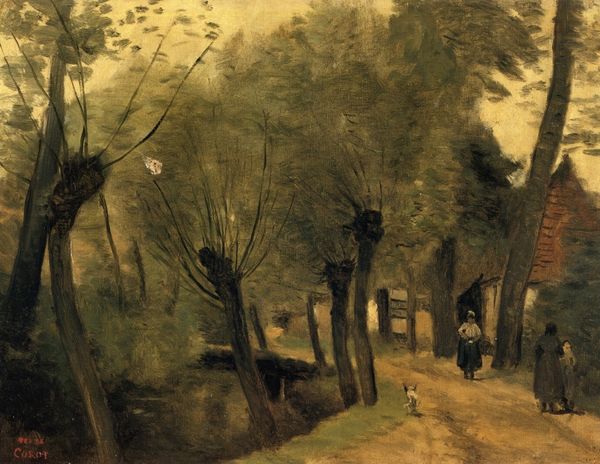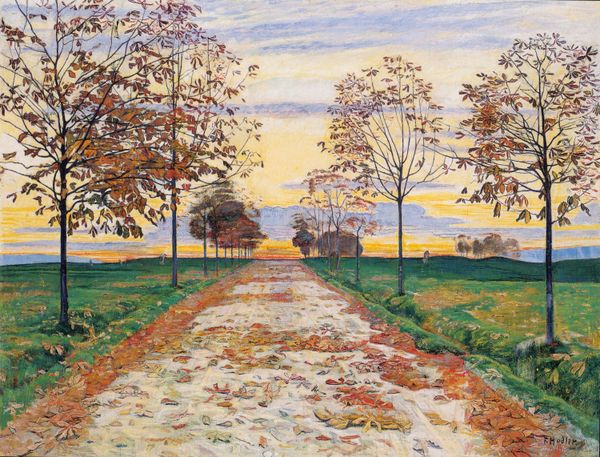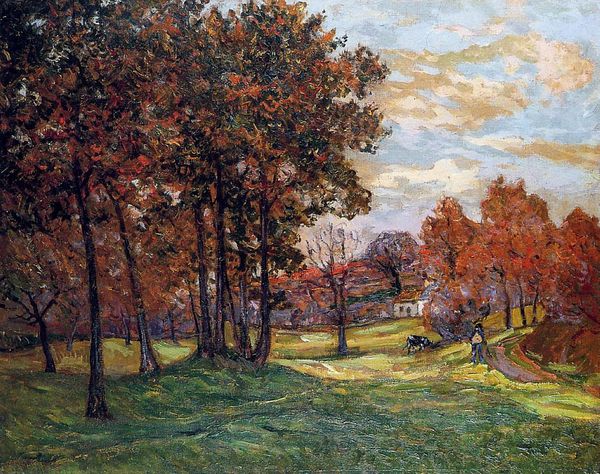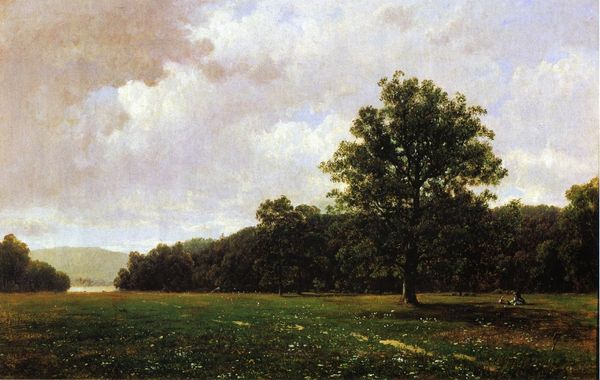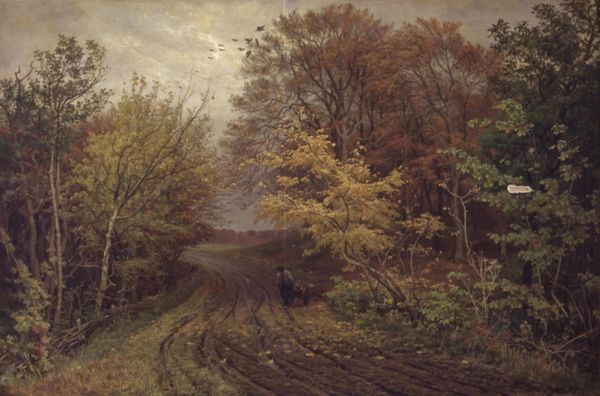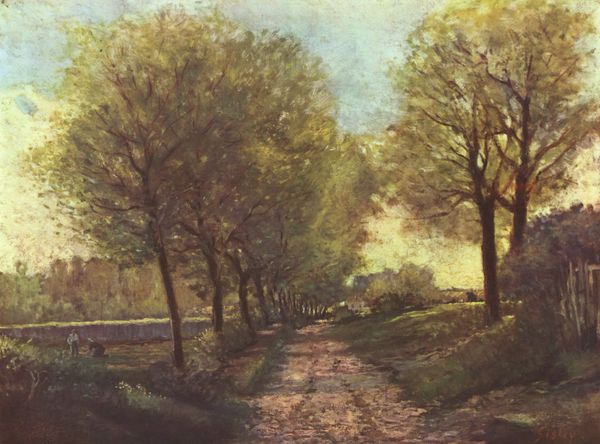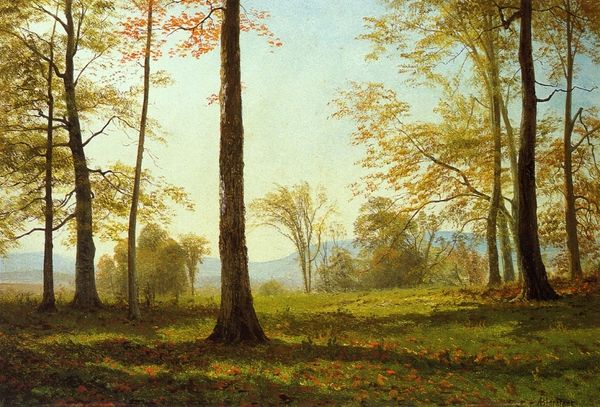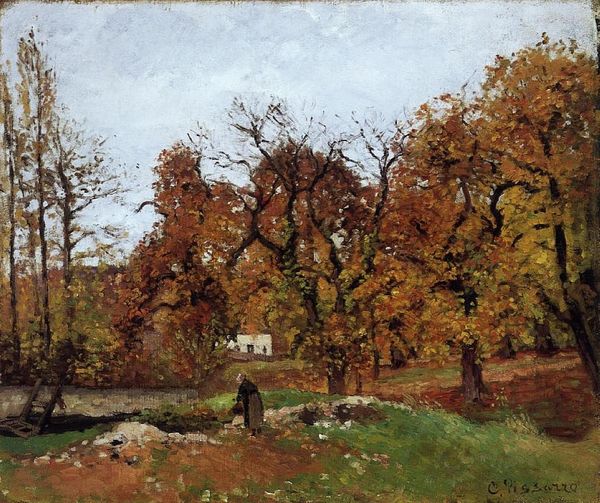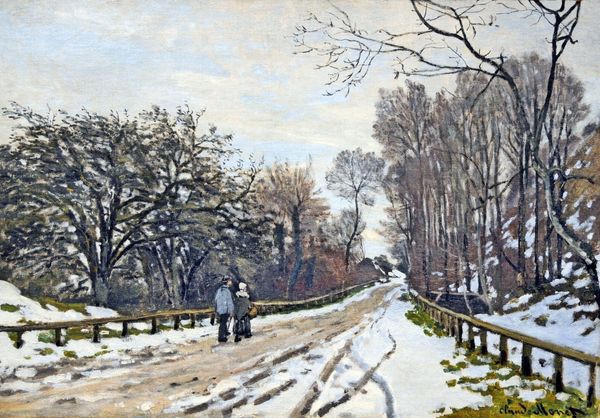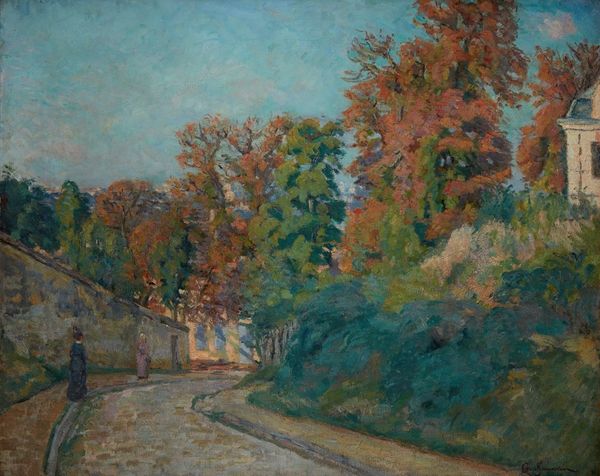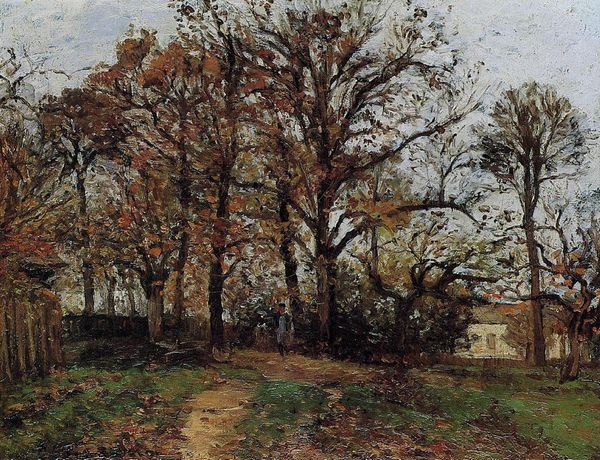
Copyright: Public domain
Curator: Here we have Claude Monet’s "The Road from Chailly to Fontainebleau," painted in 1864. A striking piece, wouldn't you agree? Editor: Immediately, I'm struck by how unfinished it feels, like a sketch that captures the wear and tear of everyday travel. Those deep ruts in the road really emphasize the raw, almost industrial presence of the horse-drawn vehicles and the road itself as a means of moving commodities and potentially even armaments. Curator: Yes, it’s an interesting blend of realism and the burgeoning impressionistic style, particularly in the treatment of light filtering through the trees. Monet's use of plein-air painting, working outdoors directly from the landscape, adds to this sense of immediacy and fleeting light. It really conveys the particular qualities of that location! Editor: Precisely! Considering this was made using oil paints, the canvas seems to absorb light rather than reflect it. Also the location, Chailly to Fontainebleau, begs the question about resources extracted and consumed... Where did the resources used on that road come from? What of the impact of resource exploitation for said purposes? Curator: A very material reading! You can almost smell the earth. For me, this road is also a metaphorical passage— perhaps it’s symbolic of Monet's own artistic journey, his move toward capturing subjective experience over objective reality. And let's remember this piece dates from a key point in the history of France. Editor: Definitely! With the figure dressed like someone in a working uniform along the right, and given the presence of a flatbed-trailer cart on the left, my interest in labor, the class that labors in such conditions and their material realities remains an insistent focus. The artist's material interests often speak of what matters at a particular moment. Curator: Perhaps, though Monet often skirted clear-cut social commentary, and focused instead on fleeting impression rather than deeper meaning. Still, the earthy palette evokes an undeniably lived-in world, even if it isn't explicitly spelled out in the brushwork or any specific references to labour practices. The sheer act of painting outdoors and trying to reflect life directly as an influence to modernism carries important symbolic weight! Editor: Precisely—the labour of the painter himself mimicking, and possibly dignifying through the act of representing labor itself. So while those deeper social issues are, maybe as you suggested, subtly implied in those material interactions, their very lack of full definition asks important questions of the audience. Curator: Well, it's certainly given us much to ponder on this brief stretch of painted road. Thanks for your unique perspective! Editor: The pleasure was all mine, truly, to pull over and ruminate on it!
Comments
No comments
Be the first to comment and join the conversation on the ultimate creative platform.

